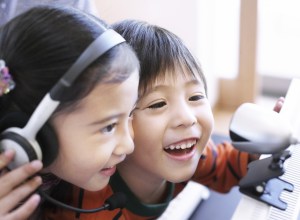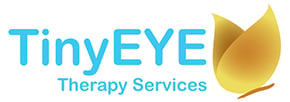“The most precious gift we can offer others is our presence. When mindfulness embraces those we love, they will bloom like flowers.”
Thich Nhat Hanh

Hello everyone,
While learning more about improving access to special education services, I came across a paper called: DEMYSTIFYING SPECIAL EDUCATION IN VIRTUAL CHARTER SCHOOLS by Lauren Morando Rhim and Julie Kowal. This special report (page 45) defines a virtual school as:
A comprehensive educational program delivered primarily through distance learning that may include a continuum of means of delivery of content.
In addition to a wealth of background information about virtual schools and legislation, the comprehensive report provides multiple questions and answers, checklists for supporting special education programming (pages 14 & 15), a sample of writing an IEP or Individual Education Plan (page 22), resources, and a useful section for understanding acronyms and definitions.
A strong point throughout was that children, who access their teacher on-line from their own home or from a nearby building, must still have appropriate access to special education services. This can prove to be challenging as mentioned in the following excerpt from page 10:
While virtual charter schools may in many ways be an excellent fit for students with disabilities, it can be challenging to meet state and federal special education requirements in the virtual environment…Related services, particularly occupational and physical therapy, may be especially difficult for virtual charter schools to provide to students spread throughout a wide
geographic area (Mueller & Ahearn, 2004; Rapp et al., 2006).
Virtual schools have something in common with non-virtual schools: consistent speech-language pathology services may be difficult to access. It could be that the school is in an area that struggles to recruit or retain therapists, or maybe the local S-LP covers a large geographical area for many children and cannot frequently reach every child at their virtual-location. Regardless of the reason for lack of access, it is the law to implement an IEP.
One solution for successfully implementing an IEP for children who attend virtual school is on-line therapy services. Since the students and teachers already have access to internet communication, connecting to on-line therapy support this way can help the children achieve their IEP goals. For example, a qualified S-LP will commit to serving your student through:
- Direct Therapy: Children who are able to remain in front of the computer for ten to twenty minutes and participate in the program via talking, listening, pointing/gesturing/eye-gazing, or using the mouse will benefit the most from this program. The S-LP will interact with the student on the computer from a different location. On-line therapy software includes games that the student and therapist play together. A program assistant should remain with the child throughout the session.
- Consultation and Supervising: Speech-language pathologists connect with colleagues, assistants, and parents to support programming and development. In addition to meeting with one another in real-time for observation or interaction, team members can record and view videos of each other, share notes, play games, and access therapy plans. This service is valuable for supervising support staff and for serving children with higher or more complex needs, since it enables the therapist to observe and coach the people who work regularly with the children. Ultimately, your therapist will grow your capacity to help the children in your environment.
- Practice programs: Your S-LP connects you with strategies and activities to continue the development outside of therapy session. With fully integrated on-line therapy services, children receive their own virtual Backpack so that they can share their progress and selected therapy games with their home and school. The therapist adds games that are relevant to the student’s goals and can monitor its use.
- Out-Reach Services: Inviting your on-line S-LP to visit your location to help with assessments and programming support is a valuable compliment to the on-line services.
It is essential to have a high-quality internet connection. Computer memory and bandwidth influence this connection.
SLPs have an abundance of knowledge and strategies for helping children, parents, and teachers turn “access” to help into “outcomes”. In other words, children have various learning styles, strengths, and needs. The support that SLPs provide really can help children grab all they can from their learning environment, become active participants in the classroom, and to be fully engaged in their lives. Virtual schools give children access to a garden of learning and growing. On-line therapy services help the children bloom.
Follow this link for the full special report: http://www.uscharterschools.org/specialedprimers/download/special_report_rhim.pdf
Follow this link to the home page for US Charter Schools: http://www.uscharterschools.org/pub/uscs_docs/index.htm
If a school district in your area needs Speech-Language Pathologists, please let me know by email as we at TinyEYE can help!

![]()
Marnee Brick, MSc
Speech-Language Pathologist and Director of Speech Therapy
TinyEYE Therapy Services (Speech Therapy Telepractice)
http://www.TinyEYE.com-Online Speech Therapy Telepractice
School Districts: Recruiting Speech-Language Pathologists? Job Boards not working? Click this link!
[youtube=http://www.youtube.com/watch?v=5xVJ13ZwRrk&feature=related]


